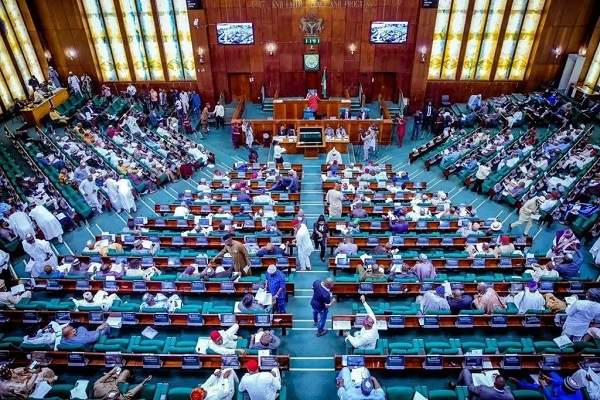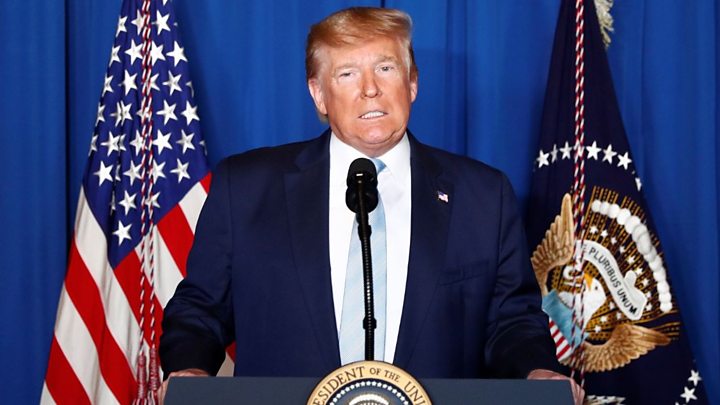…Merchants warn: Oil could rise to $100 by 2019 as global markets tighten***
Stock markets around the world retreated on Monday amid concerns over the impact of a trade spat between China and the United States, while oil prices rallied to a four-year-high after OPEC ignored U.S. calls to raise supply.
Oil prices jumped more than three per cent to a four-year high after Saudi Arabia and Russia ruled out any immediate increase in production despite calls by Trump for action to raise global supply.
Brent crude was last at 81.36 dollars, up 3.24 per cent.
U.S. crude oil futures settled at 72.08 dollars per barrel, up 1.84 per cent.
Wall Street equities stumbled on a wave of uncertainty over the future of U.S. Deputy Attorney General Rod Rosenstein, who oversees the special counsel investigation into Russia’s role in the 2016 presidential election.
The White House said President Donald Trump and Rosenstein are scheduled to meet on Thursday to discuss Rosenstein’s future.
The White House announced the meeting after a flurry of conflicting media reports on whether Rosenstein had resigned.
The New York Times last week reported that Rosenstein had suggested secretly recording Trump in 2017 and recruiting Cabinet members to invoke a constitutional amendment to remove him from office.
The Dow Jones Industrial Average fell 157.92 points, or 0.59 per cent, to 26,585.58, the S&P 500 lost 9.66 points, or 0.33 per cent, to 2,920.01, and the Nasdaq Composite dropped 0.10 points.
MSCI’s gauge of stocks across the globe shed 0.46 per cent.
U.S. Treasury yields across maturities briefly fell by around two basis points after an initial report that Rosenstein had resigned before ticking back up.
Benchmark 10-year notes last fell 3/32 in price to yield 3.0796 percent, from 3.068 per cent late on Friday.
In European equities markets, the benchmark index for euro zone blue chip stocks retreated 0.6 per cent.
Meanwhile, the pan-European STOXX 600, which also includes stocks in Britain and outside the European Union, was down 0.56 per cent.
Europe had followed Asia lower, with MSCI’s broadest index of Asia-Pacific shares outside Japan closing 1.17 per cent lower, while Japan’s Nikkei rose 0.82 percent.
China and the United States, the world’s two biggest economies, implemented with fresh tariffs on each other’s goods on Monday, showing no signs of backing down from an increasingly bitter trade dispute.
Such dispute is expected to knock back global economic growth.
A worsening trade environment is likely to exacerbate diverging economic performance and policy rates between different regions, Citi analysts said in a note on Monday.
Brexit, as Britain’s planned exit from the European Union is known, weighed on sentiment. On Friday, British Prime Minister Theresa May said talks with the EU had hit an impasse.
British opposition leader Jeremy Corbyn said on Sunday he would support a second Brexit referendum if his Labour Party backs the move, heaping more pressure on May.
There is speculation that she could opt to call a snap parliamentary election.
European Central Bank chief Mario Draghi said he expected a vigorous pickup in euro zone inflation, backing moves toward unwinding an ECB asset purchase program meant to stimulate the economy.
That drove the euro to a more than three-month high against the dollar.
The dollar index fell 0.02 per cent, dually eat into oil use, China’s Unipec said on Monday.
Speaking at the annual Asia Pacific Petroleum Conference (APPEC) in Singapore on Monday, Unipec President Chen Bo said improved energy efficiency and technological changes are keys to the trend.
Meanwhile, Commodity merchants, Trafigura and Mercuria, say oil prices could rise towards $100 per barrel towards the end of the year or by early 2019 as sanctions against Iran bite.
The merchants made the prediction on Monday at the Asia Pacific Petroleum Conference (APPEC) in Singapore.
Almost two million barrels per day (bpd) of crude could be taken out of the market as a result of the U.S. sanctions against Iran by the end of the fourth quarter this year, said Daniel Jaeggi, president of commodity merchant Mercuria Energy Trading, making a crude price spike to $100 a barrel possible.
“We’re on the verge of some significant volatility in Q4 2018 because depending on the severity and duration of the Iranian sanctions, the market simply does not have an adequade supply response for a 2 million barrel a day disappearance of oil from the markets,” Jaeggi said.
Washington has already implemented financial sanctions against Iran and it plans to target the country’s oil exports from November 4, putting pressure on other countries to also cut Iranian crude imports.
Ben Luckock, co-head of oil trading at fellow merchant Trafigura said crude oil prices could rise to $90 per barrel by Christmas and to $100 by the New Year as markets tighten.
Oil prices have been rising since early 2017, when the Organization of the Petroleum Exporting Countries (OPEC) together with other suppliers including Russia started withholding output to lift crude values.
Unplanned disruptions from Venezuela to Libya and Nigeria have further tightened the market just as global demand approaches 100 million bpd for the first time.
The threats of disruption as well as the early supply cuts have helped to lift Brent crude futures to nearly $80 a barrel this month, a level not seen since 2014.
With U.S. sanctions against Iran, the third-largest producer in OPEC, looming, U.S. investment bank J.P. Morgan said in its latest market outlook that “a spike to $90 per barrel is likely” for oil prices in the coming months.
OPEC and other oil producers are considering raising output by 500,000 bpd to counter falling supply from Iran.
“Oil could rise to $100 by 2019 as global markets tighten,” the merchants warned.





















